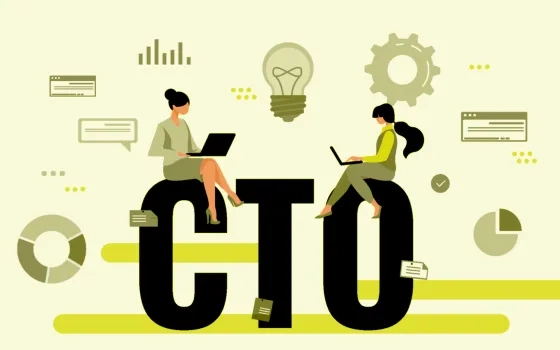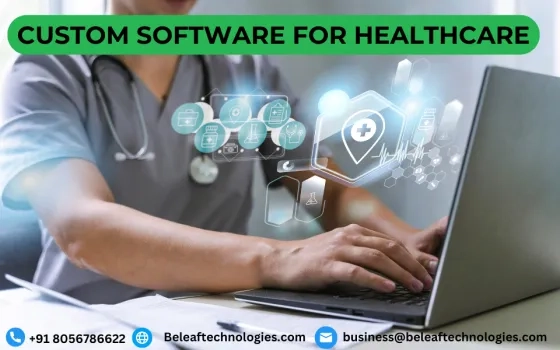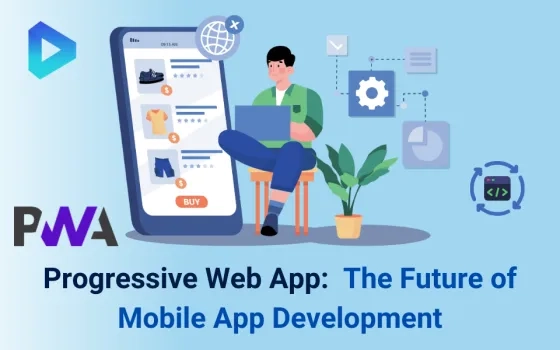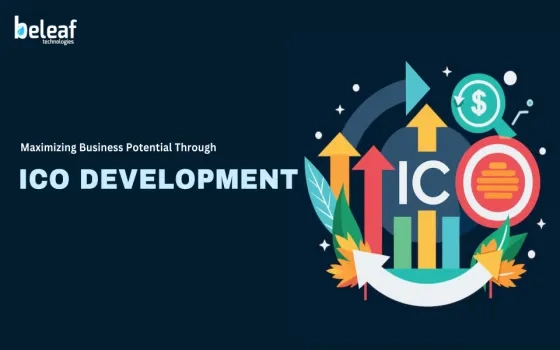In modernity's world, where technology and business are running at a faster pace, CTO is a crucial officer whose role is to guide them towards innovation and make companies achieve their goals. Despite these ongoing developments and the constantly moving technological landscape, there is nowadays an emergent trend which is all-embracing owing to the new spin in the latter approach of CTO as a Service.
Understanding CTO as a Service
CTO as a Service (CaaS) is a revolutionary adoption of outsourcing the CTO functions while professionals are remotely located. Through this strategy, businesses are granted access to expertise needed by their senior tech leadership whenever necessary, and in-house generalists are not forced to engage in areas of managing technology.
The Evolution and Importance
In light of the fact that the perplexities of the digital age places a high demand on businesses, CTO as a Service can be viewed as a rational solution to the weaknesses of the prospective traditional models of CTO. It may therefore either enable the company to move very quickly to achieve their growth targets as startups aim, or to find the professionals to rapidly manage their technology problems on the spot, as it is the case with established enterprises.
Finally, besides updating the team of IT workers, large in numbers, CTO as a Service cannot compare to a permanent hire taking into account commitment terms. This led to another important trend that deals with suits flexible and swift enough to work in the modern world, as characterized by digitalization.
CTO as a Service Solutions: Hearkening back to the source
CTO as a Service, being the central technical advisor, provides many benefits for companies. Basically, CTO as a Service acts as a guide between external and internal stakeholders, helps create efficient business procedures, and links business visions with realities.
- Strategic Planning and Guidance: Achieving a roadmap which is transformational requires an experienced CTO who will craft a strategic plan that provides the foundation for issuing the direction of how to use the technology resources in a way that supports the commercial aspirations while helping to fast track growth and innovation.
- Technology Stack Optimization: CTO as a Service follows the specific methodology of detailed analysis to provide customers with support technicians that can remove redundant technologies and apply the newer technologies which are important to facilitate the app programs.
- Scalability and Flexibility: Businesses as they may need specialists to be available when shortage is experienced, more technical experts can be made available and plus, they can avoid surplus by bringing in specialists at the least needed. Such flexibility helps to distribute technical talent appropriately.
- Risk Mitigation and Security: CTO as a Service involves risk management, cybersecurity protocols and approaches, and being proactive in terms of what risks to take and the threats to be saved.
- Cost-Efficiency and Resource Optimization: The outsourcing of these services helps reduce expenditures related to CTOs' permanent employment by limiting hiring costs to only the time periods when specific technical expertise is applied.
- Innovation and Technology Adoption: As the CTO, you catalyze the adoption of new technologies that are vital for business intelligence, catalysing the culture of innovation in organizations and easier integration of advanced technologies into their business practices.
- Team Empowerment and Collaboration: Through CTO as a Service, the organizations are able to share important information as well as promote multispectral and multi-faceted communication among the teams.
Utils of Serv as CTO Approaches & Cycle
CTO as a Service operates within various methodologies and life cycles tailored to meet the specific needs of businesses:
- Agile Methodology: Highlights lean and agile design, teams work as one and naturally innovate to incorporate advancement, suitable for startups and projects of enhanced nature.
- Waterfall Methodology: It is processual through the use of clearly defined stages. Thus this type of approach is appropriate for projects that have well-defined objectives and slow, predictable scope changes.
- DevOps Life Cycle: Develops operational and development process toward sustaining efficiency and teamwork with a special focus on the build-test-deploy cycle.
- Spiral Model: Combines the features of the waterfall method and the iterative development procedure which makes it the most suitable for projects containing high levels of complexity and risk perception interacting with systematic risk analysis and risk management.
- Rapid Application Development (RAD): Addresses rapid delivery and optimum user feedback that effectively works for those busy companies who put speed and user satisfaction at the forefront.
Top Inside Tools and Outsideshooter in CTO within Service
CTO as a Service leverages various tools and third-party solutions to enhance collaboration, project management, and development processes:
- Jira: Comprehensive project management software with tracking and an agile project management tasks scheduler.
- Slack: Instant messaging application for live interaction and group discussions.
- Trello: Collaboration tools for making project management simple boards list and card screens.
- GitHub: An element of version control is the collaborative software development tool.
- AWS (Amazon Web Services): Scalable deployments can be achieved through cloud infrastructure.
- Google Cloud Platform: Cloud-computing and storage answers.
- Azure DevOps: The suite of development tools are to be provided in the project scope for application development, and application deployment as well.
- Docker: Builds as a container platform for apps.
- Asana: The management system involves guiding the teams as they perform their tasks through monitoring the work and check it.
- Confluence: Platform in which the directors may use to share and collaborate with their projects.
- Miro: Collaborative web-based whiteboard for achieving creative act.
- Notion: Workspace provides – desk, wifi, collaborative zone, and shared project backbone such as stacks or boards.
Being so, these instruments enhance easy connection between parties, project and development administration, creating an exceptional experience of CTO in service model.
Let us have the shortened 5-steps flow in brief for your CTO outsourcing
Implementing CTO as a Service involves a straightforward five-step flow:
- Assessment and Planning: Review technical needs and outline the areas that can be done by others.
- Research and Selection: Compute your business needs, depth of experience and CTO compatibility in the development process and improvement of your enterprise.
- Contracting and Agreements: Come up with contracts that are drafted in clear terms, and instruct staff on roles, responsibilities, and deliverables.
- Collaborative Onboarding: Outsource CTO to the team instead conduct an interview or bring expertise in when needed.
- Ongoing Communication and Evaluation: Maintain a close link and do a periodic review to see if the action taken has the expected results.
Why Consider Outsourcing CTO as a Service: Here are the 5 important benefits of practicing meditation
Businesses should consider outsourcing CTO services for the following core benefits:
- Access to Expertise: Engage knowledgeable peers who are experts within narrow technology domains.
- Cost-Efficiency: It is more cost effective to rely on a third party who will oversee all technical aspects of the operation, thereby minimizing the incurred overhead costs of hiring, and hosting the company's CTO.
- Flexibility and Scalability: Scaling a technical capacity to address suitable project scope and company objectives.
- Focus on Core Competencies: We are in charge of strategy but can withstand outside technical maneuvering.
- Risk Mitigation and Innovation: Benefit from the novelty of new solutions all the time and also avoid the challenges that may be faced with technology-based decisions.
Success through the Double Side of a Door - Our CTO as a Service Department
Partnering with a reputable CTO as a Service provider, such as Addevice, offers several benefits: Working with a proven CTO as a Service supplier like Addevice brings plenty of advantages together:
a) the company is surely reputable;
b) support and consultation are available;
c) overview and understanding of our technologies are given to us.
- Expertise Beyond Expectations: Our CTOs, selected from top industries are a pool of experts with long experience and are on call to guide our clients.
- Tailored Solutions for Your Business: It would also cater to your business demands be it your business goals or the issues you are having.
- Seamless Integration and Collaboration: Partner fluidly alongside your existing team and forge ahead with the implementation of plans.
- Proven Track Record of Success: You can also make use of success stories of other businesses who achieved with Addevice's help.
- Future-Proofing Your Business: Make adjustments in your technology plan as your business grows in order to keep it modernized.
Conclusion
CTO on-demand is a strategic approach to facilitating technology leadership which allows companies to have access to the technical expertise they need to perform well and be at the front in the current business context. A company will realize its full potential because of developing collaborations with a trustworthy partner, similar to Addevice, and inducing innovation, growth, and prosperity in the digital era. To find out how CTO as a Service operates, please go to Addevice's blog.















